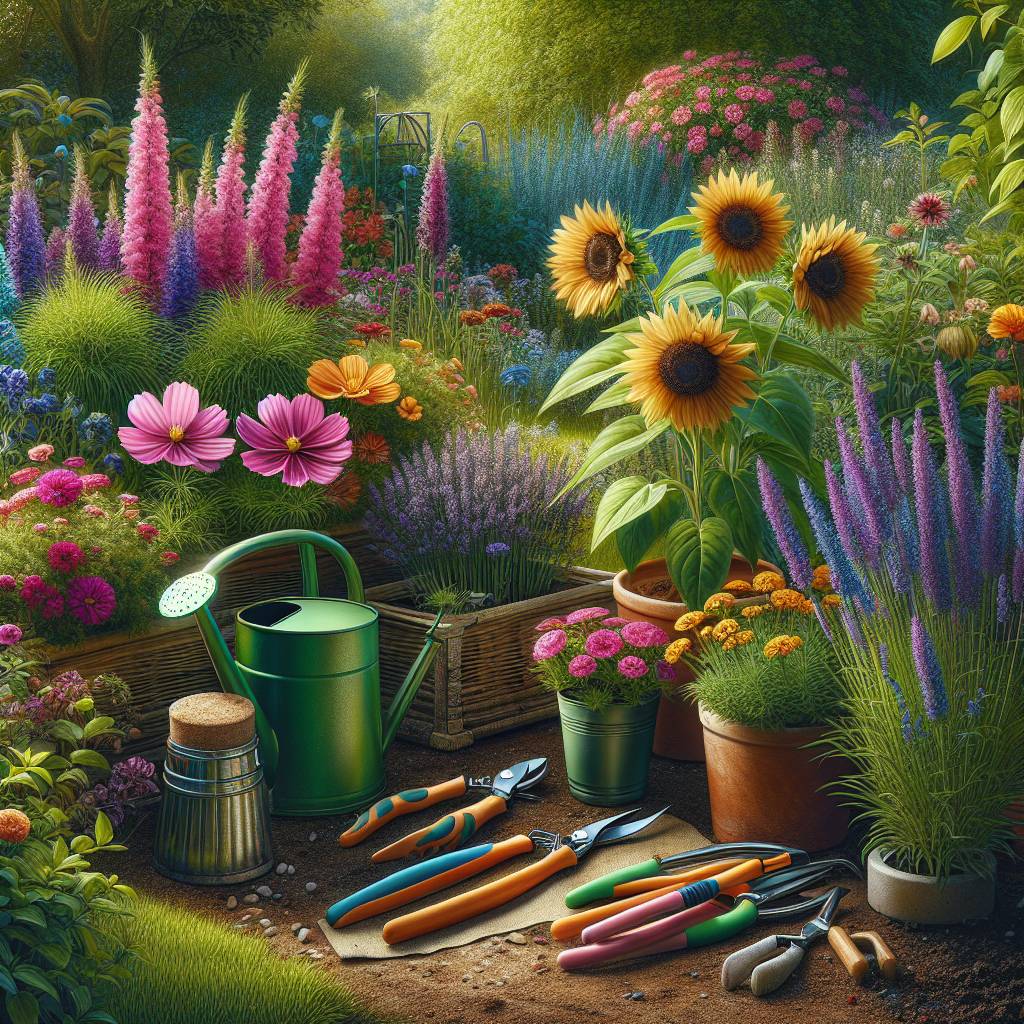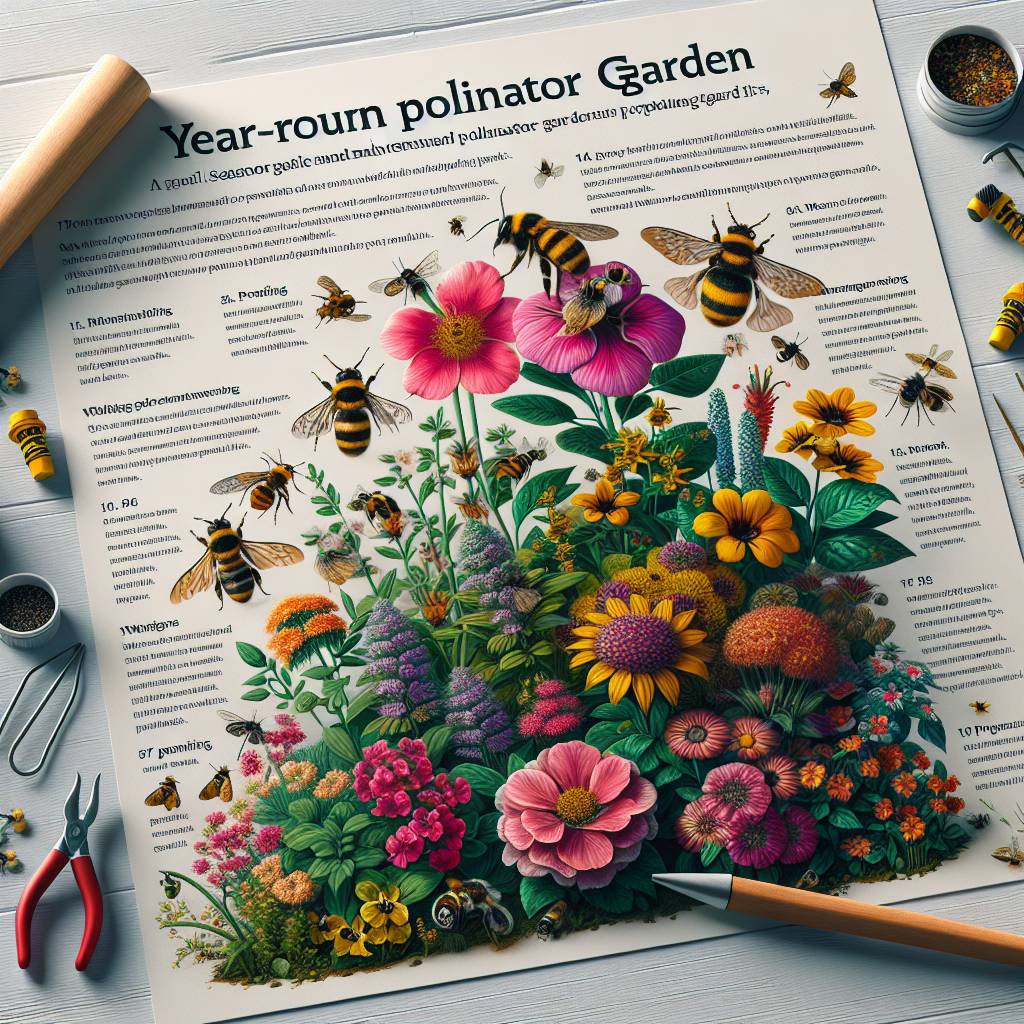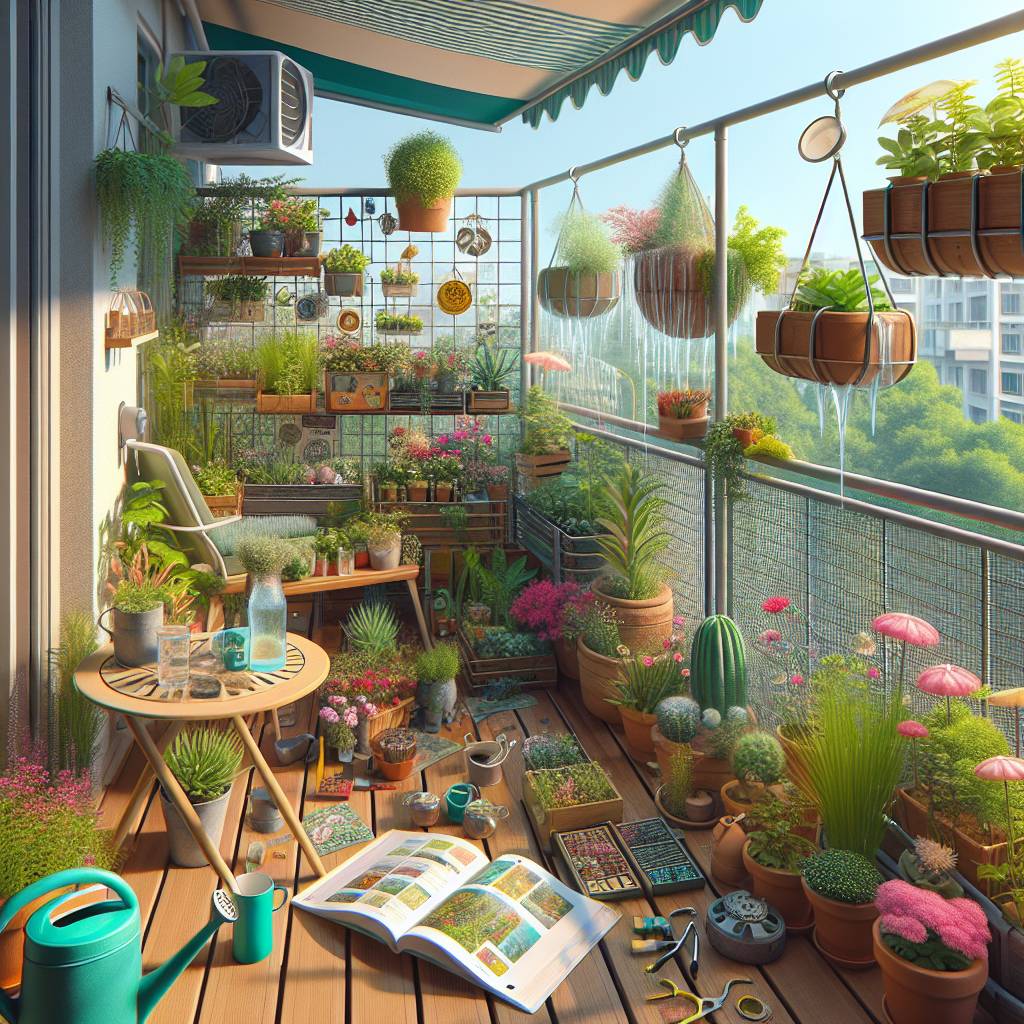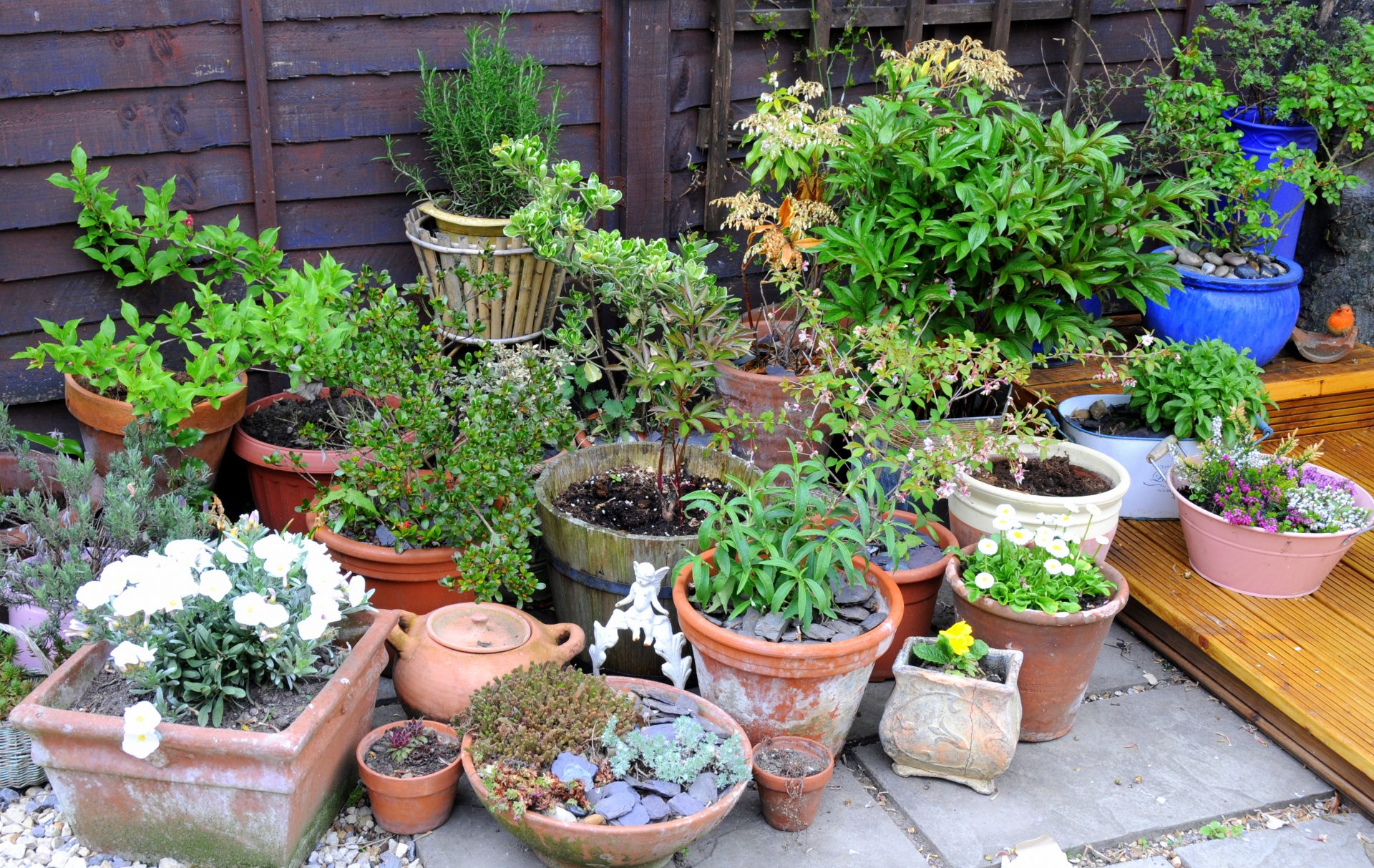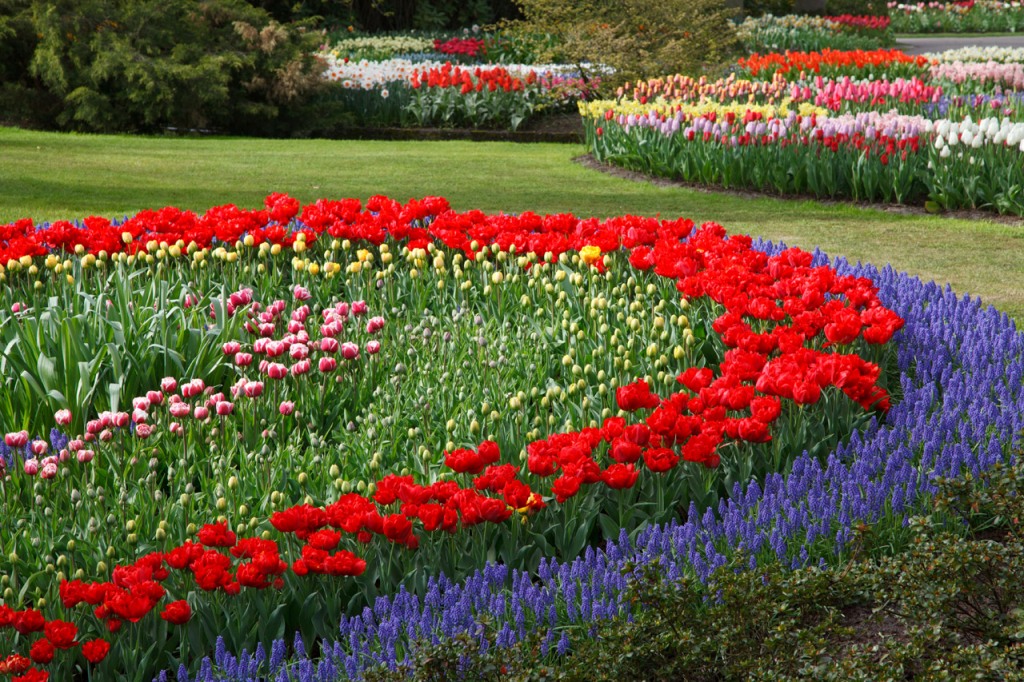Key Takeaways
- Start with Easy-to-Grow Perennials: Begin your gardening journey with low maintenance flowers like perennials that require less attention and care.
- Choose Bright Annuals for Instant Color: Opt for annual flowers to add vibrant hues to your garden without the need for extensive maintenance.
- Create Ideal Growing Conditions: Ensure your flowers thrive by providing them with the right amount of sunlight, water, and soil conditions as discussed in the article.
- Follow Seasonal Care Guidelines: Implement the seasonal care tips provided to keep your garden flourishing throughout the year, aligning with the changing needs of your plants.
- Address Common Challenges Proactively: Be prepared to tackle common gardening issues by referring back to the solutions outlined in the article.
- Elevate Your Garden Aesthetics: Enhance the beauty of your garden by incorporating a variety of low maintenance flowers that not only look stunning but are easy to care for.
Understanding Low Maintenance Flowers
Beginner Basics
Before diving into planting low maintenance flowers for beginner gardeners, it’s crucial to grasp the fundamentals of gardening. Soil quality, sunlight exposure, and adequate watering are essential for healthy perennial flower growth. As a novice gardener, start with easy-to-cultivate flowers to gain confidence in your gardening skills.
Researching about the specific needs of different flowers is vital as they vary in requirements like sunlight levels, temperature preferences, humidity tolerance, and part shade. To ensure successful growth, tailor your garden environment to meet these unique conditions. By understanding these nuances, you can create an ideal setting for your chosen low maintenance blooms.
Growth Conditions
When deciding between perennial and annual low maintenance flowers, consider their distinctive characteristics. Perennials return each year without replanting efforts while annuals need yearly attention. Mixing both types allows continuous flowering while reducing replanting tasks significantly. Choosing wisely based on longevity and upkeep needs, perennial flowers ensure a flourishing garden that demands minimal maintenance.
Top Picks for Beginners
Coneflowers

Coneflowers, also known as Echinacea, are perfect low maintenance flowers for beginner gardeners. These perennials not only require minimal care but also attract beneficial pollinators like bees and butterflies. With a variety of colors available, they can adapt to different soil conditions effortlessly. To encourage continuous blooming throughout the season, simply deadhead spent flowers regularly.
Cosmos

Cosmos are another excellent choice for novice gardeners seeking easy-to-grow annual flowers. These vibrant blooms come in an array of shades and require little attention to thrive. Known for their drought tolerance and ability to flourish in poor soil conditions, cosmos are ideal for beginners looking for fuss-free plants. Regularly removing faded blooms will prompt these flowers to keep producing new ones consistently.
Marigolds

Marigolds are versatile annuals that offer more than just beauty in the garden; they act as natural pest repellents due to their strong scent. Available in various sizes and colors, marigolds can enhance any garden aesthetic effortlessly. By planting marigolds near vegetables in sunny conditions, beginner gardeners can naturally deter harmful insects without resorting to chemical pesticides.
Easy-to-Grow Perennials
Lavender

Lavender is a fragrant perennial flower that offers calming properties, thriving in well-drained soil and full sun. Regular pruning helps maintain its shape and encourages healthy foliage.
For example:
- Perennial flowers like lavender are ideal for beginner gardeners due to their low maintenance requirements.
- Lavender’s soothing scent and vibrant purple blooms make it a popular choice among gardeners.
Daylilies

Daylilies are hardy perennials known for their abundant blooms in various colors and wide zones. These resilient flowers can adapt to different soil types with minimal care needed. To ensure their vitality, dividing daylilies every few years prevents overcrowding and maintains vigor.
For instance:
- Beginner gardeners often find success with perennials such as daylilies because of their adaptability.
- The diverse color range of daylilies adds visual interest to any garden space.
Peonies
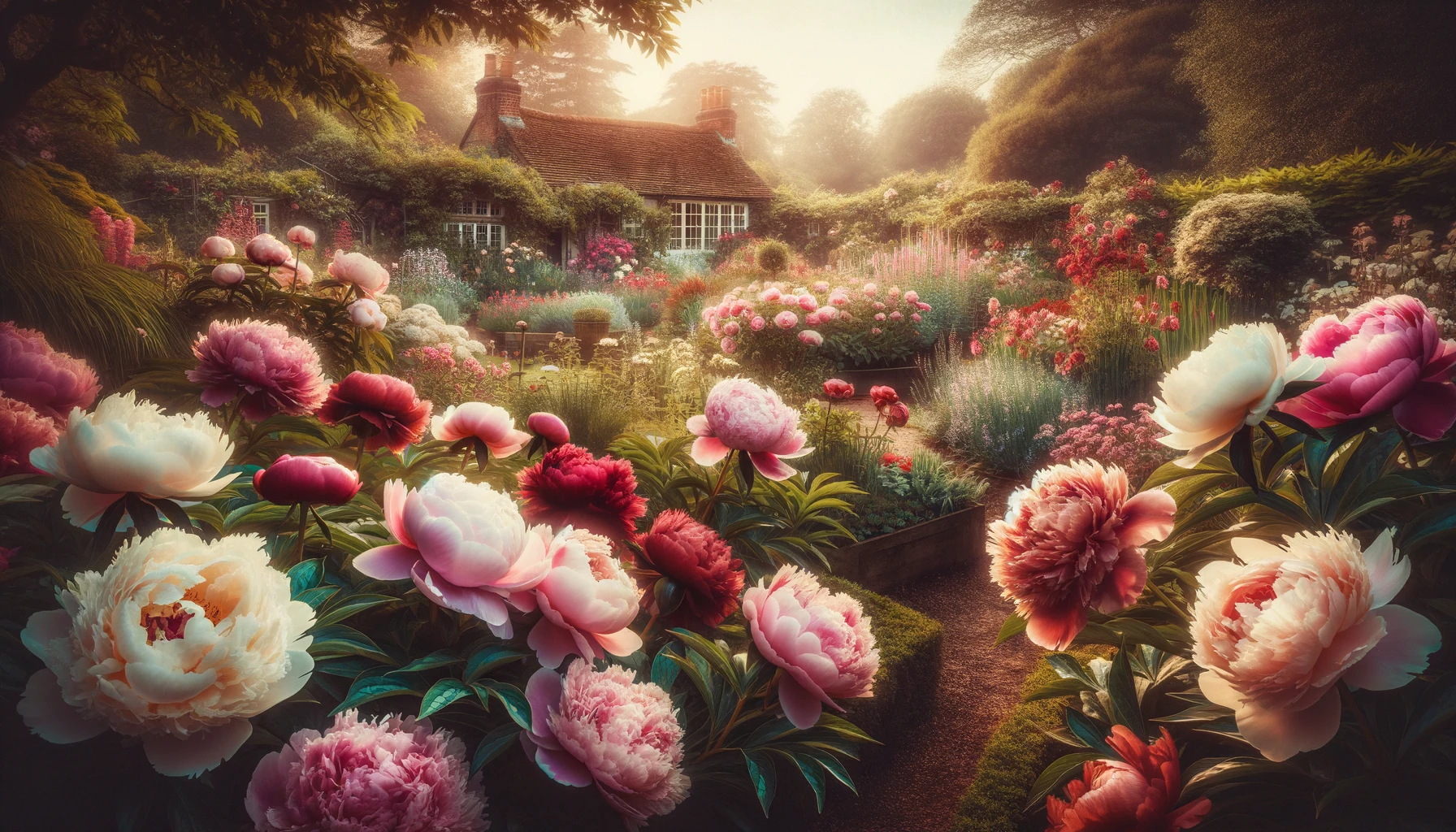
Peonies are long-lived perennials that boast large, showy flowers blooming in spring. Thriving in rich, well-drained soil, peonies need support for their heavy blossoms. Planting them at the right depth is crucial; avoid planting too deep to prevent hindering flowering.
To illustrate:
- Perennial flowers, like peonies, add elegance and charm to gardens while requiring minimal upkeep.
- Providing proper support ensures that the stunning blooms of peonies remain upright throughout the blooming season.
Brightening with Annuals
Zinnias

Zinnias are vibrant annual flowers perfect for beginner gardeners. These colorful blooms not only beautify your garden but also attract lovely butterflies. They are tough plants, able to withstand heat and adapt to various soil types easily. By regularly removing faded flowers (deadheading), you can encourage zinnias to keep blooming all season long.
Pros:
- Colorful and attractive to butterflies.
- Heat-tolerant and adaptable to different soils.
Cons:
- Require deadheading for continuous blooming.
Sunflowers

Sunflowers, with their tall stalks and bright yellow petals, are iconic annuals that can add a cheerful touch to any garden. These stunning flowers thrive in full sun exposure and well-drained soil conditions. Once the flower heads have dried out, you can harvest their seeds for a tasty snack or next year’s planting.
Key Points:
- Tall stature and vibrant yellow petals.
- Need full sun exposure for optimal growth.
Nasturtium
Nasturtiums are not just pretty; they’re edible too! These annual flowers come in various colors, adding a delightful pop of brightness to salads or dishes. They prefer poor soil conditions, making them an excellent choice for novice gardeners without fancy gardening setups. Planting nasturtiums near vegetables can help repel pests like aphids naturally.
Examples:
- Edible flowers suitable for culinary use.
- Tolerate partial shade well.
Ideal Conditions for Thriving Flowers
Sunlight Needs
Different flowers thrive in varying sunlight conditions. Some flourish in full sun, while others prefer partial shade. Understanding the sunlight requirements of your chosen flowers is essential for their growth. Consider the orientation of your garden to ensure that each plant receives adequate sunlight based on its needs.
To illustrate, sun-loving plants like marigolds and zinnias require at least six hours of direct sunlight daily. In contrast, impatiens and begonias thrive in shaded areas with limited exposure to the sun. By aligning your flower choices with their specific sunlight preferences, you can create a flourishing garden that showcases vibrant blooms throughout the season.
Soil Types
Flowers exhibit diverse preferences including sandy, loamy, or clay soils. Before planting, assess your soil’s pH level and composition to determine its suitability for particular flowers. If needed, enhance the soil by incorporating organic matter to improve drainage and fertility levels.
For instance, roses prefer well-draining loamy soil rich in nutrients for optimal growth and blooming potential. On the other hand,** succulents**, such as sedum or sempervivum varieties are best suited for sandy soils due to their excellent drainage capabilities. By tailoring your soil preparation according to the needs of your selected flowers, you set a solid foundation for them to thrive.
Watering Essentials
Proper watering practices are vital for ensuring healthy flower development in your garden setting. Water deeply but less frequently, to encourage robust root growth among your floral selections. This method also helps reduce susceptibility to disease by preventing waterlogged conditions around roots. Consider external factors like rainfall patterns and ambient temperatures to adjust your watering routine accordingly.
Seasonal Care Tips
Spring is the time to prepare your flower garden for the upcoming growing season. Clearing debris and weeds helps create a clean slate for new growth. Amend the soil with compost or organic matter to boost its fertility, providing essential nutrients for your flowers to thrive. When sowing seeds or transplanting seedlings, be mindful of each flower’s specific requirements to ensure successful growth.
During the hot summer months, it’s crucial to provide regular watering to prevent wilting in your low maintenance flowers. Mulching around plants helps retain moisture in the soil and suppress weed growth, reducing competition for resources. Remember to deadhead spent blooms regularly and remove any diseased foliage promptly to maintain plant health and encourage continuous flowering throughout the season.
As fall approaches, it’s time for a cleanup in your flower garden. Remove dead plants and debris accumulated over the season to promote a healthy environment for new growth next year. Cutting back perennials close to ground level but leaving a few inches provides protection during winter dormancy while ensuring regrowth in spring. Applying a layer of mulch insulates the soil from extreme temperatures and protects plants from harsh winter conditions.
Common Challenges and Solutions
Pests Management
Dealing with pests can be a common challenge for beginner gardeners. Identify common culprits like aphids, slugs, or snails that may harm your flowers. To combat these pests, consider implementing natural pest control methods. You can try handpicking them off the plants or using insecticidal soap to keep their populations in check. Another effective strategy is to attract beneficial insects like ladybugs or lacewings to your garden; they help by preying on harmful pests.
Prevention is key. By regularly inspecting your plants for any signs of infestation and promptly addressing them, you can prevent major pest issues from arising. Remember that different flowers may attract different types of pests; thus, staying vigilant and learning about the specific threats to each plant species in your garden is crucial.
Pros:
- Natural pest control methods are environmentally friendly.
- Attracting beneficial insects creates a balanced ecosystem in your garden.
Cons:
- Some natural pest control methods may require more effort than chemical solutions.
Disease Prevention
Another challenge faced by beginner gardeners is preventing diseases that can affect their flowers’ health. It’s essential to educate yourself about common flower diseases such as powdery mildew or black spot so you can recognize symptoms early on. One effective way to prevent disease spread is through good garden hygiene practices; remove any infected plant material promptly and dispose of it properly.
To minimize the risk of fungal diseases attacking your flowers, avoid overhead watering which can create a damp environment ideal for pathogens to thrive in. Adequate air circulation around plants also plays a vital role in preventing fungal infections; spacing out plants appropriately allows air to flow freely between them, reducing moisture buildup.
- Regularly inspect your flowers for any signs of disease.
- Practice proper sanitation by cleaning gardening tools after use.
- Provide sufficient spacing between plants for better airflow.
- Avoid working with wet plants as this can spread diseases inadvertently.
Enhancing Garden Aesthetics
Color Schemes
When planning your flower garden, selecting a color scheme is crucial. You can choose colors based on personal preference or a specific theme you want to achieve. For an attractive display, consider using complementary colors that enhance each other or contrasting ones for a bold statement. Experimenting with different color combinations will keep your garden visually captivating throughout the seasons.
To illustrate, pairing purple and yellow flowers creates a striking contrast, while shades of pink and white offer a more serene and harmonious look. By incorporating various hues strategically, you can elevate the overall appeal of your garden effortlessly.
Layout Planning
Layout planning plays a significant role in creating an aesthetically pleasing flower garden. When designing the layout, take into account factors such as sunlight exposure and plant height to ensure optimal growth conditions for your flowers. Grouping plants with similar water and soil requirements together simplifies maintenance tasks like watering and fertilizing.
For instance, placing sun-loving plants in areas with ample sunlight and shade-loving ones in more sheltered spots promotes healthy growth. Integrating paths or borders within your garden not only adds visual interest but also enhances accessibility for maintenance activities like weeding or deadheading.
Beyond the Basics
Companion planting is a smart strategy for low maintenance flowers for beginner gardeners. By pairing your flowers with compatible plants, you can create a thriving garden ecosystem. For instance, marigolds are excellent companions to tomatoes as they repel pests that commonly affect tomato plants. Researching suitable companion plants for your chosen flowers ensures a harmonious and beneficial relationship among your garden crops.
Attracting pollinators is crucial when cultivating low maintenance flowers. Opt for blooms that entice bees, butterflies, and hummingbirds into your garden space. Flowers like lavender, sunflowers, and zinnias are popular choices known to attract these beneficial insects. Providing nectar-rich blooms throughout the season supports pollinator populations and aids in the natural pollination process essential for flower reproduction.
When focusing on low maintenance flowers, avoiding pesticides is key to maintaining a healthy garden environment. Pesticides can harm not only harmful insects but also beneficial ones like bees and butterflies vital for pollination purposes. Embracing natural pest control methods such as introducing ladybugs or planting herbs like basil can help deter pests without disrupting the delicate balance of your garden ecosystem.
Final Remarks
So, you’ve got the lowdown on low maintenance flowers now! From understanding what they need to tackling common issues, you’re all set to bloom your garden effortlessly. Remember, even the hardiest plants need a little TLC, so stay on top of those seasonal care tips. Don’t fret if challenges arise; there’s always a solution waiting to sprout up.
Now go out there and let your garden flourish with these beginner-friendly blooms. With the right knowledge and a sprinkle of dedication, you’ll soon have a vibrant oasis right in your backyard. So grab that watering can, put on your gardening gloves, and watch as your green thumb works its magic!
Frequently Asked Questions
What are low maintenance flowers?
Low maintenance flowers are plants that require minimal care and attention to thrive in a garden. These flowers can withstand various conditions, including fluctuations in weather and soil types, making them perfect for beginner gardeners.
How do I choose the best low maintenance flowers as a beginner gardener?
When selecting low maintenance flowers, consider factors like your local climate, sunlight availability, and soil type. Opt for varieties known for their resilience and ability to adapt easily to different environments. Start with popular choices like marigolds, zinnias, or daylilies.
What are the ideal conditions for growing thriving low maintenance flowers?
Most low maintenance flowers prefer well-draining soil, adequate sunlight (usually 6-8 hours per day), and regular watering without being waterlogged. Ensure proper spacing between plants to allow good air circulation. Mulching can also help retain moisture and suppress weed growth.
How can I address common challenges when growing low maintenance flowers?
Common issues like pests, diseases, or poor flowering can be managed by practicing good garden hygiene – removing dead foliage regularly – using organic pest control methods if needed or adjusting watering schedules accordingly. Observing your plants closely will help you detect problems early on.
Can I mix low maintenance annuals with perennials in my garden?
Yes! Combining annuals with perennials adds variety and color contrast to your garden throughout the seasons. Annuals provide continuous blooms while perennial plants come back year after year. Just ensure both types share similar light and water requirements for harmonious growth.
